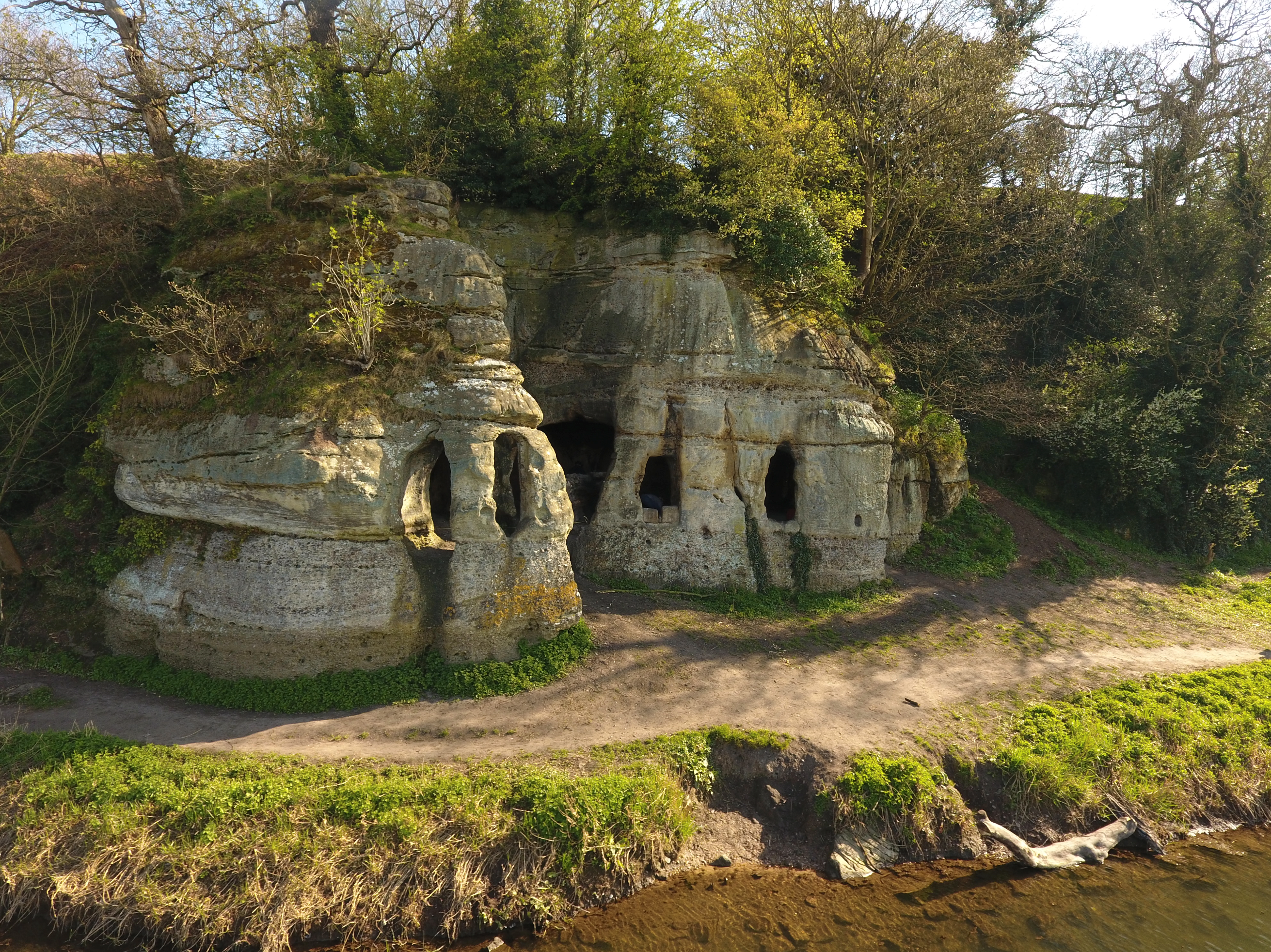Is this Britain’s oldest intact home?
Research into a rock-cut building in Derbyshire has revealed it dates back to the ninth century, not the 18th century as had previously been assumed, making it the oldest intact domestic interior in the UK – complete with doors, floor, roof and windows. David Keys reports

Archaeologists have discovered the oldest intact dwelling ever found in Britain. Created some 12 centuries ago as an artificial cave, it appears to have been constructed as an “enforced retirement home” for a deposed Anglo-Saxon king.
The newly-identified specially created multi-room Anglo-Saxon cave house is not only of great archaeological significance but is also of substantial historical importance.
As a place of exile for an Anglo-Saxon king, the new discovery in many ways symbolises the chronic instability of early medieval English society and government.
The ninth-century Anglo-Saxon ruler, King Eardwulf of Northumbria, who had originally come to the Northumbrian throne following the successive murder and overthrow of his two predecessors, had himself survived an assassination attempt and had been deposed twice before being exiled to his retirement cave.
In the seventh, eighth and ninth centuries, England was made up of at least seven major kingdoms, ruled over by some 200 kings, of whom up to 16 per cent were murdered, a similar percentage were killed in battle and around 33 per cent were peacefully removed. It is estimated that only around a third ended their reigns through natural death.
Rules of royal succession in each kingdom were not fully established – and competing local noble families often slaughtered each other in their hunger for power.

What’s more, to further complicate matters, some Anglo-Saxon kingdoms (and political entities abroad) exploited such rivalries to expand their own influence.
Indeed, the newly discovered cave house needed to be built or adapted to accommodate an Anglo-Saxon king, whose rise to power and ultimate political demise may have been a reflection not only of Northumbrian internal political discord – but also of wider geopolitical rivalries between a temporarily reborn Roman Empire (the Empire of the Franks, established by Charlemagne) and England’s most powerful kingdom, Mercia (essentially the English Midlands).
The cave house is also important because it represents a very specific early medieval answer to a common Anglo-Saxon political problem – what to do with deposed kings. The house seems to have functioned as a hermitage – and its probable Anglo-Saxon royal occupant appears to have been forced to retire and become a religious hermit there.
Indeed, it’s likely that King Eardwulf, who had always been allied with, and geopolitically aligned with, the Frankish Empire, was allowed to continue living only on the condition that he became a monk and lived in relative isolation as a hermit under the supervision of the church, in the territory of his former arch-enemy, the King of Mercia. Eardwulf’s exile to the cave may therefore have represented a diplomatic victory for Mercia and a distinct geopolitical setback for the Empire.
What’s more, the King’s removal seems to have been orchestrated by his son (and successor) – so it may well have also represented an “Old Guard to Young Turk” generational shift in geopolitical alignments – with Northumbria’s continental links weakened and its subservience to its powerful neighbour, Mercia, increased.
However, perhaps to sugar the pill of political reality, the deposed Northumbrian king-turned-hermit was posthumously transformed into a saint. Known in later medieval times as St Hardulph, he eventually died as a hermit, probably in the 830s, and was buried at Breedon on the Hill in Leicestershire, just five miles from the caves. Parts of his saintly shrine still survive in Breedon parish church.
“The discovery illuminates a particularly fascinating and troubled period in English history,” said Dr David Petts of the University of Durham, a specialist in early medieval religious sites.
As a patchwork quilt of often unstable and sometimes conflict-ridden mini-countries, much of England frequently consisted of failed states in which the only stable element was the church.

The cave house complex – investigated by archaeologists from the Royal Agricultural University and Wessex Archaeology – consisted of a three-room residence and a personal chapel.
The complex – carved out of soft sandstone – is located between the hamlets of Foremark and Ingleby in South Derbyshire.
The caves have long been considered to be 18th century, but the archaeological investigation, published this month in the Proceedings of the University of Bristol Spelaeological Society, has revealed that they are actually Anglo-Saxon.
Edmund Simons of the Royal Agricultural University, the project’s lead archaeologist, said: “Our findings demonstrate that this odd little rock-cut building in Derbyshire almost certainly dates from the ninth century – and not from the 18th century as had previously been assumed.
“This makes it the oldest intact domestic interior in the UK – with doors, floor, roof and windows.
“Using detailed measurements, a drone survey, and a study of architectural details, it was possible to reconstruct the original plan of three rooms and an easterly facing chapel, complete with three apses.”
The narrow doorways and windows of the rooms in the dwellings closely resemble Anglo-Saxon architecture, while a rock-cut pillar is similar to those in the famous ninth-century Anglo-Saxon church crypt at nearby Repton.
Edmund Simons’s wider cave dwellings investigation project has so far identified more than 170 cave houses in 20 other locations across the Midlands, and dating tests and other research may well ultimately reveal that several more of them are also of Anglo-Saxon origin.
Join our commenting forum
Join thought-provoking conversations, follow other Independent readers and see their replies
Comments
Bookmark popover
Removed from bookmarks